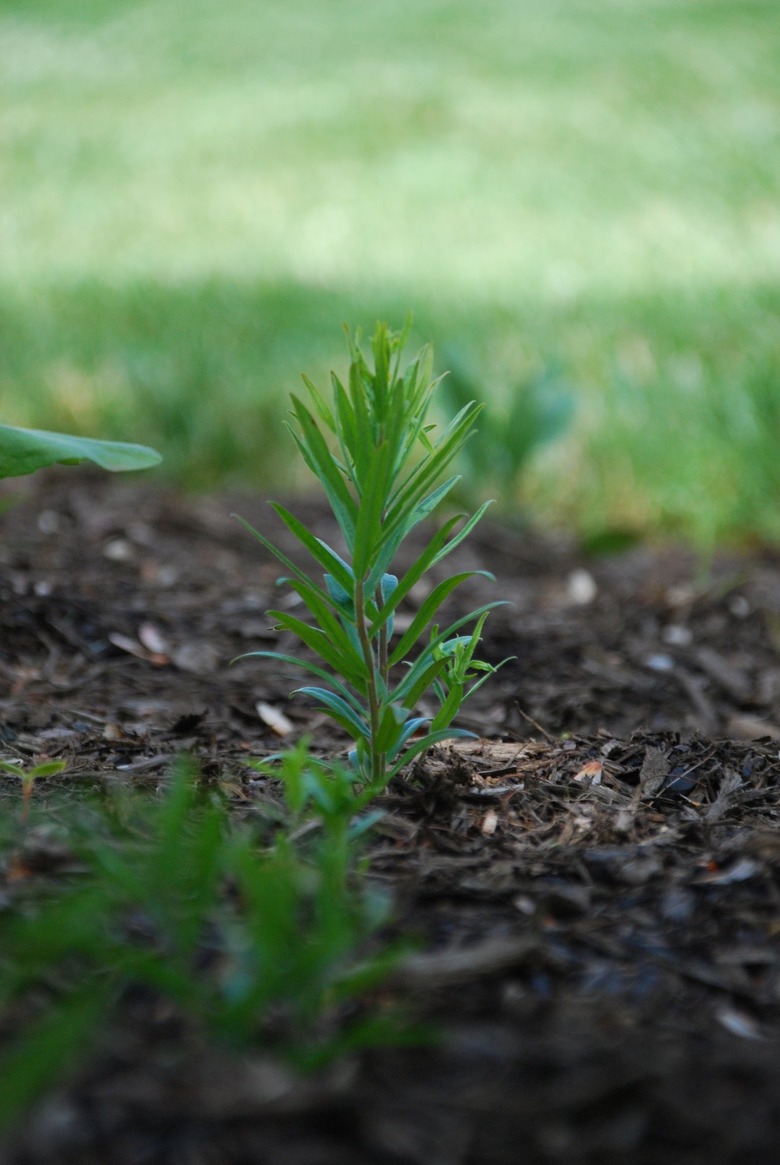Monarch Butterflies Are Close To Extinction — Here's How You Can Help
Is there anything more beautiful than watching a monarch butterfly dance through the sky? Sadly, this may no longer be a scene we'll see in the near future. On July 21, 2022, the International Union of Conservation of Nature (IUCN) announced that the migratory monarch was added to the IUCN Red List of Threatened Species and marked as endangered.
In the West, from the 1980s to 2021, the monarch population has declined by about 99.9%, going from a group of around 10 million to just 1,914 butterflies. In the East, from 1996 to 2014, the species has also shrunk by 84%.
Fortunately, there are steps we can all take to address this upsetting news. For more information, we spoke with Mary Phillips, the head of the National Wildlife Federation's Garden for Wildlife.
Why is the monarch butterfly facing extinction?
Why is the monarch butterfly facing extinction?
"Monarchs are threatened with widespread habitat loss; increased use of pesticides to control insects and weeds; and natural enemies such as predators, parasitoids, and diseases," Phillips tells Hunker. "A changing climate is [also] making some habitats less suitable and forcing changes in migratory patterns."
Phillips adds that the most significant threat is loss of habitat, since it negatively affects breeding, migrating, and overwintering (aka the ability to survive the winter). Specifically, milkweed — the plant on which monarchs lay eggs — is no longer plentiful in the United States because of the farming industry's use of pesticides and planting of Roundup Ready crops. The latter, created by Monsanto, refers to genetically modified crops that are resistant to the herbicide Roundup (which is used to kill weeds).
Why is the monarch an important part of our ecosystems?
Why is the monarch an important part of our ecosystems?
"As pollinators, the monarch butterfly migration across the continent provides an invaluable service, essential for many ecosystems to thrive," explains Phillips. "It is thanks to pollinators — such as butterflies, bees, and other insects — that we have many of the flowers and dietary staples that we enjoy."
How can we save the monarch?
How can we save the monarch?
First, consider planting native nectar plants, including native milkweed, in your garden. It's important to note that there are different varieties of milkweed, so make sure you pick the correct one. To make it easy, National Wildlife Federation has a Native Plant Finder.
Phillips also provided the following additional action steps:
- Encourage local leaders to join the Mayors' Monarch Pledge.
- Engage in community conservation actions such as native habitat restoration, education, outreach, and local policy changes to benefit monarch butterflies.
- Enroll in monarch conservation, community-based science opportunities in your area.
- Reduce or eliminate the use of pesticides.
What is considered the correct milkweed plant for different regions?
What is considered the correct milkweed plant for different regions?
"There are several dozen species of milkweed plants native to North America," Phillips says,"and it is important to be sure to know your zone to choose the right one for your region." In addition to using the Native Plant Finder, the Nectar Plants for Monarchs guide will help you find the correct flora for your specific location.
Garden for Wildlife also makes it easy by offering different plant collection purchase options — which come with free shipping — for each territory. The best part is that, according to the organization's site, all the funds raised from these collections will support the National Wildlife Federation's "non-profit mission to help declining wildlife and expand native plant availability nationwide."
How do you care for milkweed?
How do you care for milkweed?
"First, we suggest choosing plants over seeds. Seeds need a period of cold stratification, and if you don't give them that, they will not sprout," Phillips says. "If you want to plant seeds, be sure to choose ones that have already been stratified, or do the process yourself."
"In horticulture, stratification is when you place seeds close together in layers to preserve or help them germinate," she explains. Cold stratification occurs when these seeds are exposed to cold and moist conditions. "Seeds of many trees, shrubs, and perennials require these conditions before they germinate."
If you get plants instead of seeds, Phillips advises that you plant them in a container or in the ground. If you need more assistance, you can watch the Garden for Wildlife's How to Plant Your Native Plants video. "You'll want to water newly planted plants well for the first few weeks, but after that, they are perennial, and no care is needed to have them coming back year after year," Phillips adds.
Are there any other ways we can save the monarch?
Are there any other ways we can save the monarch?
"Create and certify your wildlife habitat," states Phillips, providing the following two steps:
- Create an outdoor space using native plants that attract monarchs and other pollinators.
- Once you've incorporated all the elements of a wildlife-friendly habitat — food, water, cover, and places to raise young — be recognized by certifying your space through Garden for Wildlife's signature Certified Wildlife Habitat program. Every $20 application fee helps further protect and restore key habitat for pollinators and other wildlife. Every certified garden also counts toward meeting the goals of the Million Pollinator Garden Challenge.
You can also donate to the National Wildlife Foundation here.

